#pelléas et mélisande
Text

Pelléas et Mélisande by Maurice Maeterlinck
1924
Artist : Carlos Schwabe
572 notes
·
View notes
Text

Costume for Ganna Walska as Mélisande, 'Pelléas et Mélisande', 1931
designed Erté (Romain de Tirtoff) (Russian, active France and United States, 1892-1990)
Silk voile
Center back length: 95 in. (241.3 cm)
Purchased with funds provided by Rita and Ross Barrett, Costume Council Fund, and gift of Anna Bing Arnold (M.87.80.31)
Costume and Textiles
#Ganna Walska#Melisande#Pelleas et Melisande#opera#clothing#fashion#dress#gown#medieval#fantasy#music#Erte#Erté#Pelléas et Mélisande#Mélisande
46 notes
·
View notes
Text
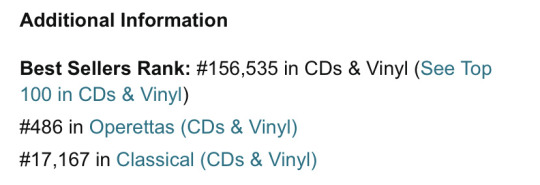
with all due respect (which is none), amazon, pelléas et mélisande is not a fucking operetta
#could you imagine tho. pelléas et mélisande as an operetta.#opera tag#opera#pelléas et mélisande#pelléas and mélisande#debussy#claude debussy#taken from the amazon page for the abbado recording
11 notes
·
View notes
Text
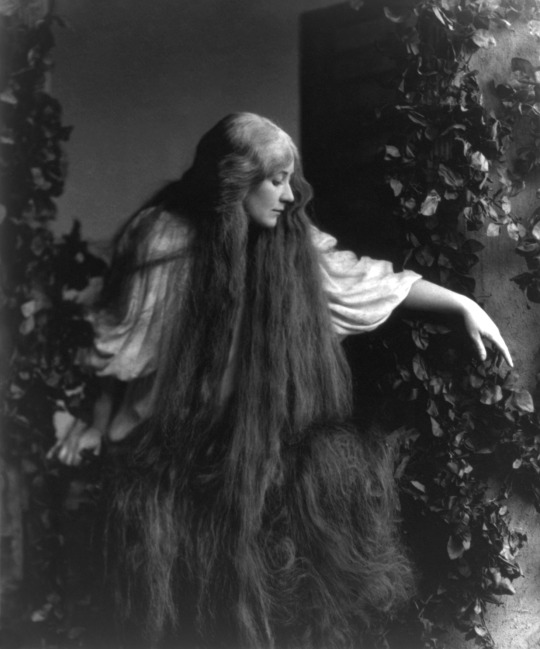
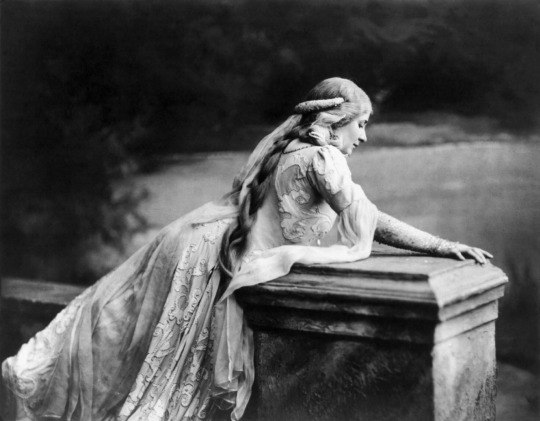
Mary Garden as Méĺisande in Claude Debussy's Pelléas et Mélisande.
18 notes
·
View notes
Text
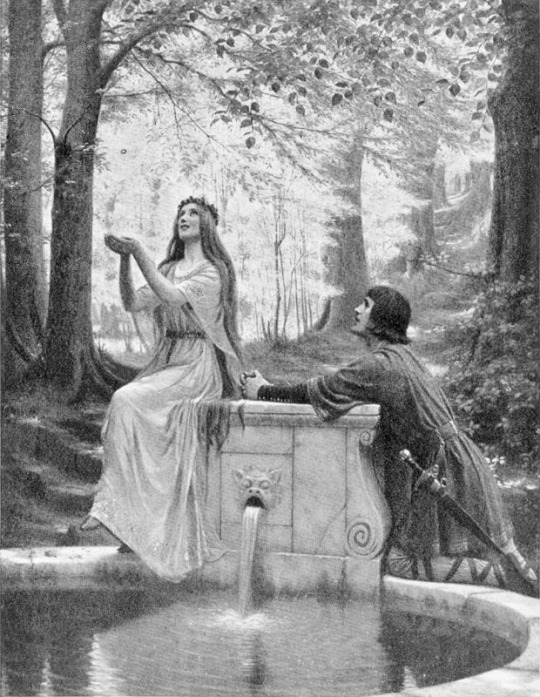
youtube
7 notes
·
View notes
Text
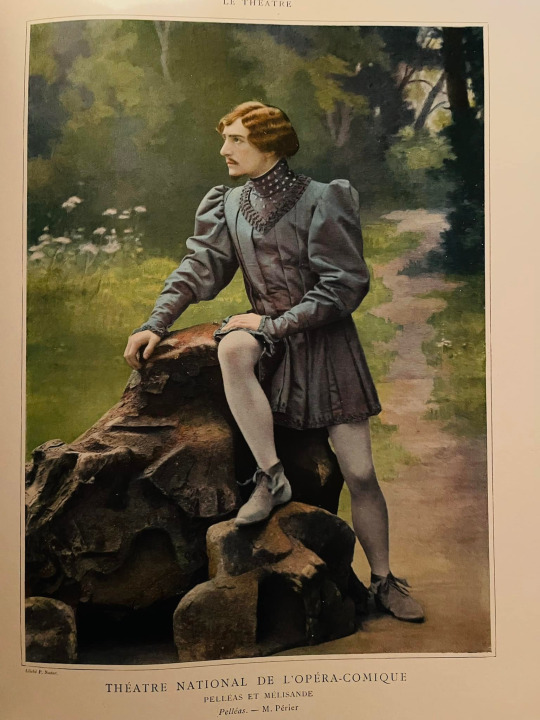
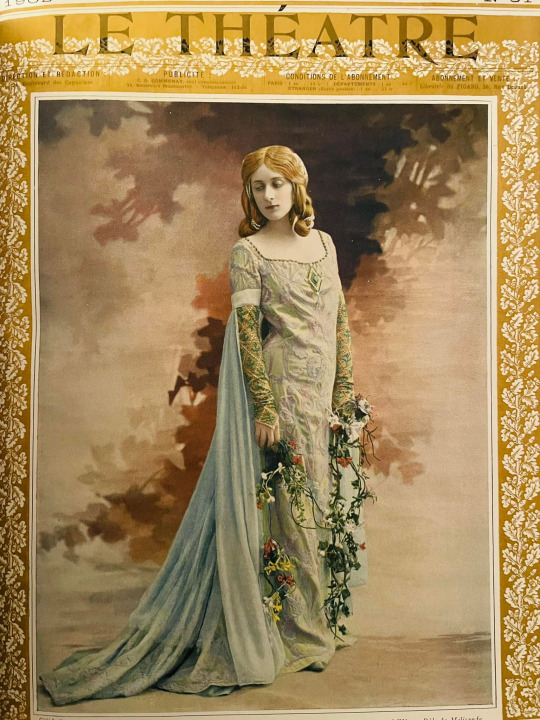
On the occasion of the premiere of the opera
“Pelléas et Mélisande” by Claude Debussy on April 30, 1902 in Paris, this special issue of the magazine “Le Théatre” was published.
Here we see the first two singers of these roles. Jean Périer and MARY GARDEN.
#Pelléas et Mélisande#Claude Debussy#Debussy#composer#classical composer#classical#opera#aria#diva#prima donna#classical music#music history#maestro#chest voice#Jean Périer#baritone#operatic baritone#Mary Garden#Garden#operatic lyric soprano#lyric soprano#operatic soprano#soprano#operatic mezzo soprano#mezzo soprano#opera singer#classical singer#classical singing#classical studies#singing
33 notes
·
View notes
Text
Not counting just refreshing myself on the stuff I was already familiar with (first two books + movie), I've now read two books, two scripts, a graphic novel, and the synopses of no fewer than three operas, AND I've watched an entire goddamn opera, all thanks to the new AMC show.
Also I was going to pick up the next book in the series while I was out today and the only reason I didn't is because it wasn't in stock at the bookstore
#ignore me#every time a piece of media contains significant/intriguing references to an opera#I think to myself ''ooh maybe I'll watch that. that should be an interesting activity to partake in''#forgetting until it's too late that I have NEVER ONCE really enjoyed watching an opera lmfao#anyway yeah I sat through all of Pelléas et Mélisande and it was... fine.#dull and way too long like every opera is but the story was fine I guess#it was fun watching it with Lestat's ''Come to Me'' song in mind though because there definitely ARE parallels to their relationship#(if you kinda squint and look at it through Lestat's victim-tinted glasses lol)#... also YEAH I'm probably gonna read Memnoch soon WHAT OF IT#I can't be stopped I'm riding this vampire train straight into the abyss
1 note
·
View note
Text
Is Lestat's relationship to Claudia ever that of an uncle? What other reason might there be for Claudia to call one of the men "Daddy" and the other "Uncle"? Consider the setting.
Why might the filmmakers have chosen to include references to A Doll's House, Madame Bovary, Marriage In A Free Society by Edward Carpenter, and Pelléas et Mélisande? What themes, if any, do these references reinforce?
Claudia calls Louis "the housewife" and Louis later describes himself as "ignoring all other duties of the role Claudia had mocked me for... the unhappy housewife." What does this indicate about attitudes towards gender and sexuality in the society in which the characters live? What is the significance of the word "role" here in relation to Lestat's promise in the first episode to free Louis from "all these roles you conform to"?
When Claudia first introduces the idea of reconceptualizing her relationship to Louis and Lestat as a sister, what does Lestat's reaction suggest about his opinion? In the following episode, when Lestat calls Claudia "sister, daughter, infant death," what is his tone?
In the context of the story, what is a "maker"? What kind of status in the household does Lestat believe a maker should have?
Does becoming vampires allow the characters to escape the social structures of the world around them, or do they remain trapped? In what ways, if any, does sociocultural context in regards to gender, race, sexuality, and family influence the characters and their relationships?
The article "Undoing Feminism: From the Preoedipal to Postfeminism in Anne Rice's Vampire Chronicles" by Janice Doane and Devon Hodges argues that the novel Interview With The Vampire "depends on an oedipal paradigm" and says that "Rice sees the oedipal moment as beginning with the father's embrace of the girl child in a patriarchal order that so restricts her possibilities for development [...] that she develops murderous rages against the father. Freud calls the oedipal stage 'a haven, a refuge' for the girl; Rice shows it to be a coffin." Do you think AMC's Interview With The Vampire is engaging with this idea? Why or why not?
655 notes
·
View notes
Text
Hot Vintage Stage Actress Round 1

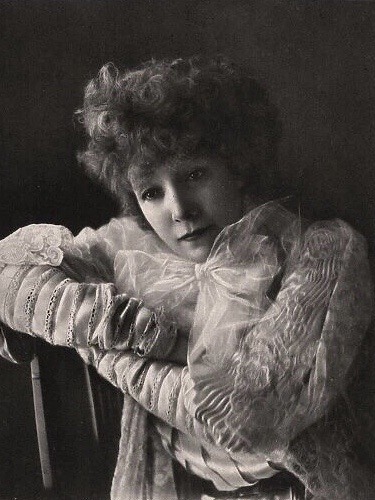
Lina Cavalieri: L'Ensoleillad in Chérubin (1905 Monte Carlo); Princess Fedora Romazov in Fedora (1906 Met); Manon Lescaut in Manon Lescaut (1907 Met)
Sarah Bernhardt: Théodora in Théodora (1902 Paris); Pelléas in Pelléas et Mélisande (1905 West End); Lucrezia Borgia in Lucrèce Borgia (1911 Paris)
Propaganda under the cut
Lina Cavalieri:
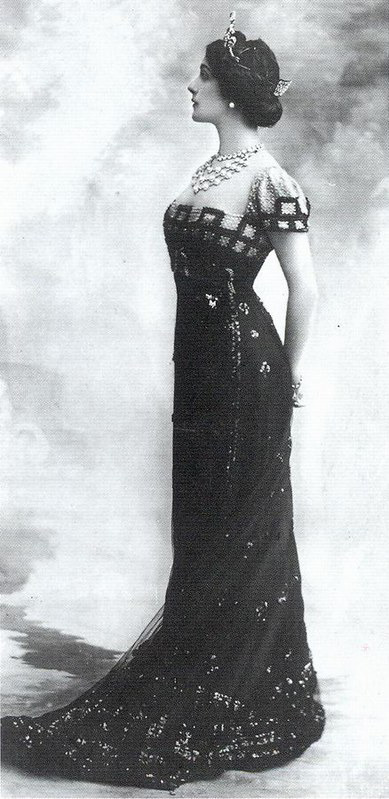


Sarah Bernhardt:
She was The Iconic Actress of the early 1900s. I love her curly hair (just like mine!) and her dedication to genderbending every single chance she got. Absolutely wild life and also..she's gorgeous





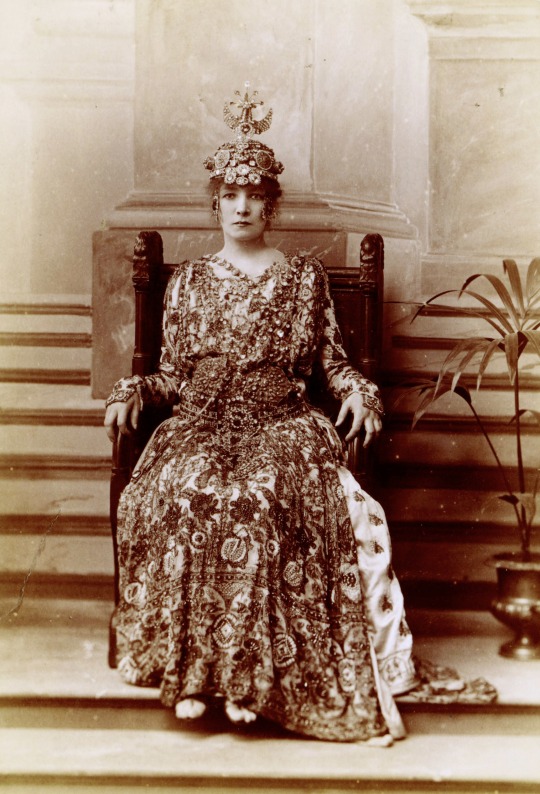
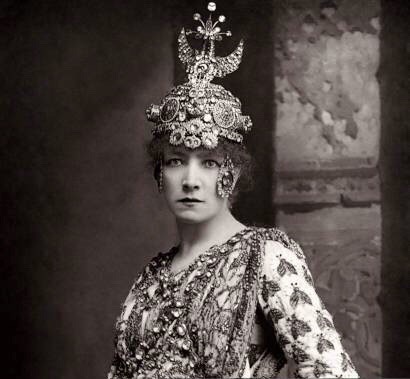

#vintagestagehotties#vintagestagepoll#vintage tournament#vintage poll#lina cavalieri#sarah bernhardt#ladies round 1#vintage ladies
68 notes
·
View notes
Text
Ok, I am the only one who became obsessed with Pelléas and Mélisande after listening to this?
For context: "Pelléas and Mélisande (French: Pelléas et Mélisande) is a Symbolist play by the Belgian playwright and author Maurice Maeterlinck. It's about the forbidden, doomed love of the title characters and was first performed in 1893.

The work never achieved great success on stage, apart from operatic setting by Claude Debussy, but was at the time widely read and admired by the symbolist literary elite, such as Strindberg and Rilke. It inspired other contemporary composers, like Gabriel Fauré, Arnold Schoenberg, Jean Sibelius, and Mel Bonis.
Synopsis: Golaud finds Mélisande by a stream in the woods. She has lost her crown in the water but does not wish to retrieve it. They marry, and she instantly wins the favor of Arkël, Golaud's grandfather and king of Allemonde, who is ill. She begins to be drawn to Pelléas, Golaud's brother. They meet by the fountain, where Mélisande loses her wedding ring. Golaud grows suspicious of the lovers, has his son Yniold spy on them, and discovers them caressing, whereupon he kills Pelléas and wounds Mélisande. She later dies after giving birth to an abnormally small girl. Source: Wikipedia.
A very interesting aspect is that it is a Symbolist play adapted numerous time, but especially by Debussy as an opera, that I'm sure Lestat has **convinced** Louis to watch 😄
Also on Wikipedia: "A brief summary of the play will concentrate best on Mélisande. At the beginning of the play she has just escaped from a failed marriage that has so traumatized her that she scarcely remembers either it or her past. She marries Golaud with no choice of her own, and remains essentially distant from him. The audience realize she is falling in love with Pelléas long before she does. On her deathbed she has quite forgotten her final meeting with Pelléas and his death, and dies without realizing that she is dying. This and the whole play—for none of the other characters are wiser—expresses a sense that human beings understand neither themselves nor each other nor the world. The problem is not simply human blindness, but the lack of a fixed and definable reality to be known. This is the Maeterlinck who paved the way for the plays of Samuel Beckett.
A key element in the play is the setting, whether visible in the stage scenery or described in the dialogue. The action takes place in an ancient, decaying castle, surrounded by deep forest, which only occasionally lets sunlight in, and with caverns underneath it that breathe infected air and are in danger of collapse. As numerous critics have pointed out, all this symbolizes the dominating power throughout the action of a destiny fatal to mankind. "
I just love how specific this is, how appropriate and how evocative the whole story is of Louis and Lestat, and I love how Louis does remember it and includes it in his Dreamstat version of it in Paris 🙈

#loustat#amc immortal universe#lestat#lestat x louis#louis de pointe du lac#lestat de lioncourt#come to me#daniel hart#amc iwtv#iwtv#iwtv soundtrack#come to me again#iwtv ost#pelléas and mélisande#Spotify
29 notes
·
View notes
Text
pelléas et mélisande
i found an english translation of pelléas and mélisande (the libretto is on pages 34-72) aka the opera referenced in the lyrics of "come to me." i recommend reading it yourself because HOLY SHIT but i'm here to bring you the highlights
this is canonically how lestat sees louis and their relationship. welcome inside his brain. it is BEYOND PARODY
plot summary: an old guy named golaud marries a random girl he finds in the woods. her name is mélisande and she is so beautiful and so sad. she starts spending a lot of time with golaud's younger brother pelléas and they fall in love. golaud becomes suspicious of their relationship and when he sees them kissing he kills his brother in a jealous rage. mélisande gives birth to a beautiful baby girl and then dies of a broken heart.
mélisande's entire characterization is being sad and frail and beautiful. obviously
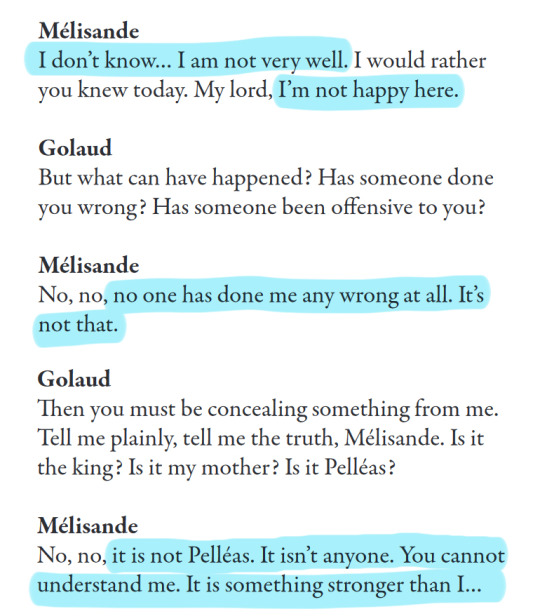

pelléas is called upon to protect her so she won't be afraid. lestat. buddy. my guy
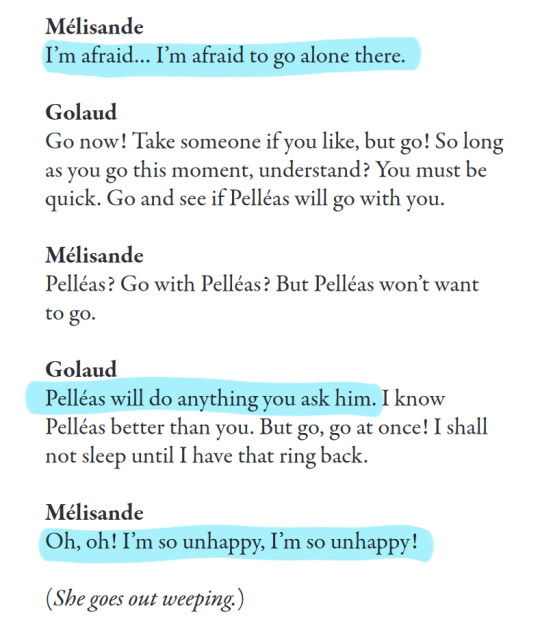
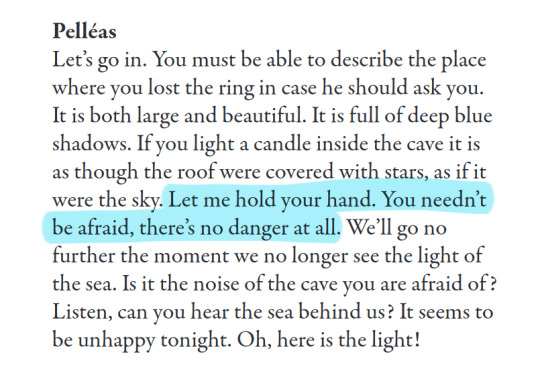
(i'm pretty sure she's just pretending to be upset she lost her wedding ring but this is just her general disposition)
they're playing at some rapunzel shit and pelléas gets a little carried away and uhhh...

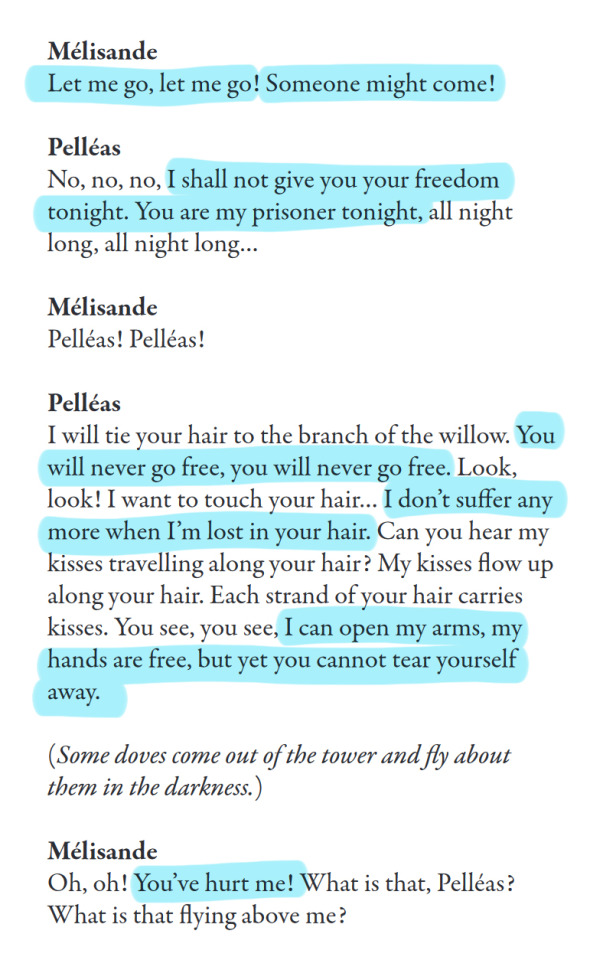
this is just him fooling around but. the vibes. and yeah there's a bird motif going on with mélisande
oh and she's pregnant in this btw. this is some fanfic shit
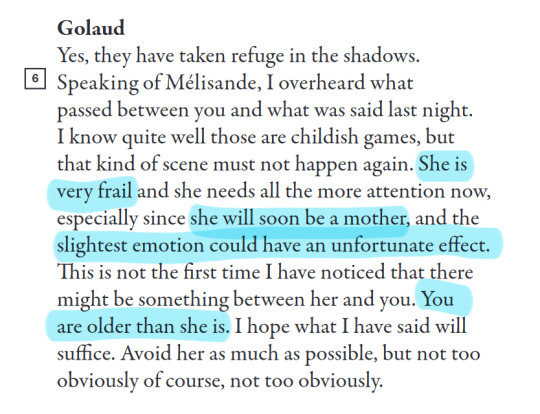
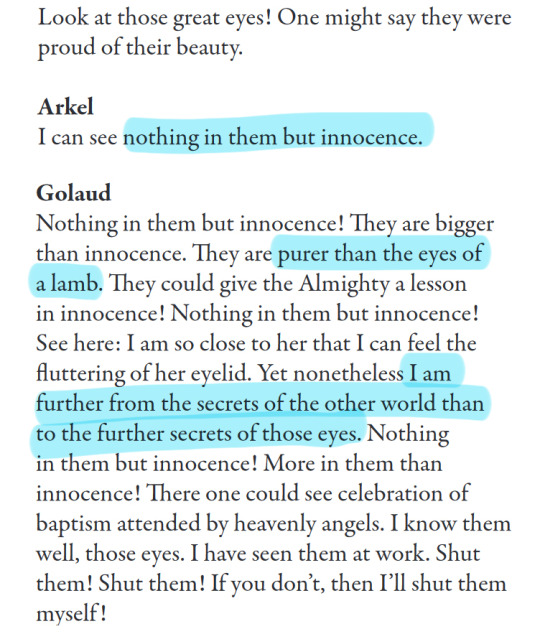
ofc golaud is being sarcastic in that last one cause he's feeling betrayed but mélisande does have doe eyes apparently
balcony monologue vibes????
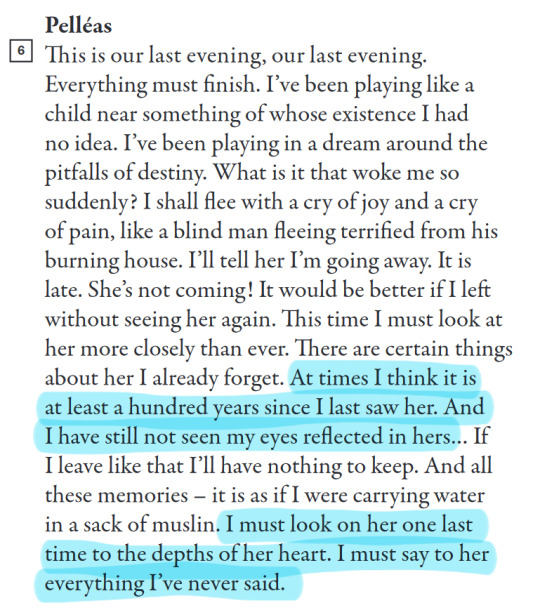

church scene vibes?????
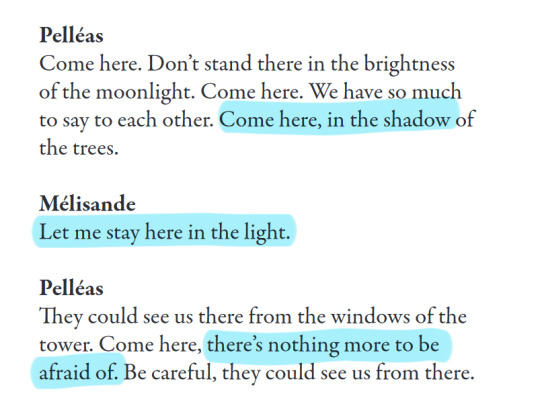

of course she uses only the tiniest voice. and he's immediately like ARE YOU FOR REAL ARE YOU LYING

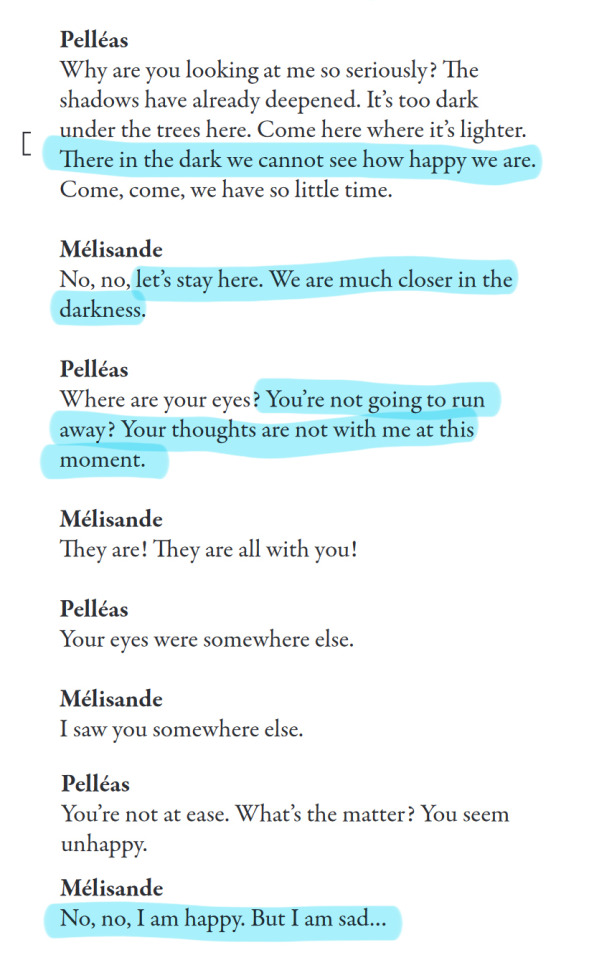
"his gaze tied a string around my lungs" "in the quiet dark we were equals" ok ok. hand size ppl ur welcome btw
mélisande is ready to die bc ofc she is
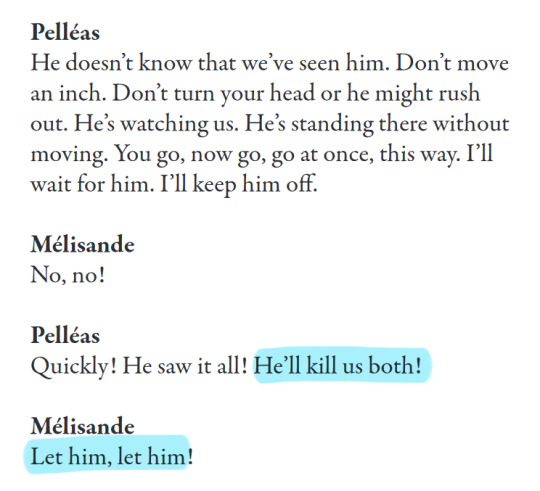
one more kiss before he dies
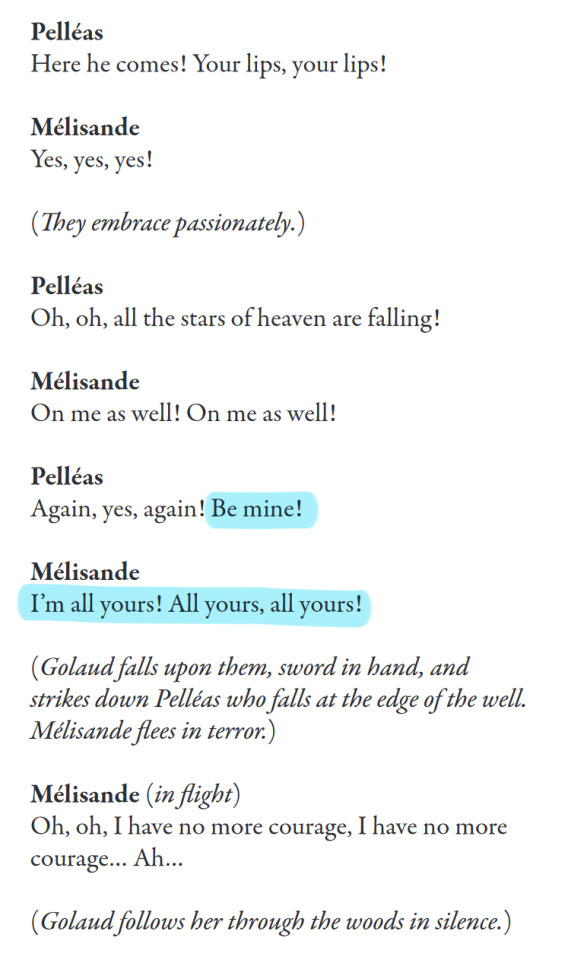
aaaaaand he dead. and she feels dead
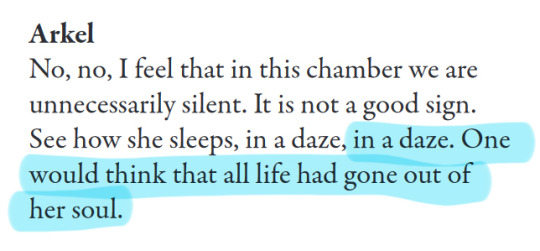

"her face seemed not her face" anyone????
also here's loumand breakup vibes. and HER CHILD IS LIKE HER SIBLING
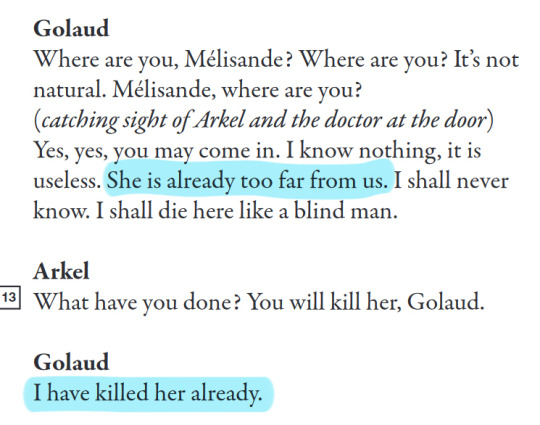
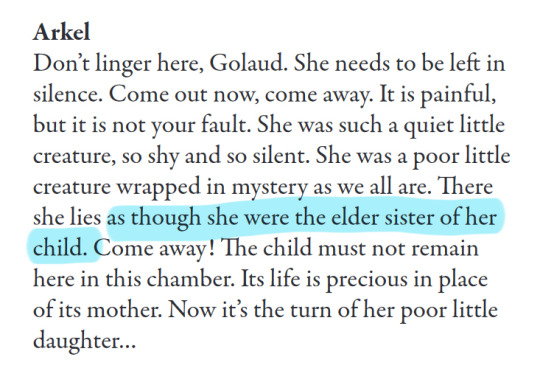
tl;dr the opera lestat projects onto reads like loustat fanfic
#iwtv#loustat#pelleas et melisande#s#ive also read iolanta and don pasquale there's some good stuff in those too but not like this#iwtv intertextuality#interview with the vampire#vampterview#vampyyrit
165 notes
·
View notes
Text
Rewind the Tape —Episode 6
Art of the episode
Just like we did for the pilot and for episodes two, three, four, and five, we took note of the art shown and mentioned in the 6th episode while we rewatched it.

Love's Coming-Of-Age: a series of papers on the relations of the sexes
Edward Carpenter, 1896
Carpenter was an English writer and philosopher, and an early activist for gay rights and prison reform. In the opening of the episode, Louis is shown to be reading his essay "Marriage, a retrospective" you can read this essay, as well as the rest of the book, in the Internet Archive, here.

The Poems of Emily Dickinson
First collected and published in 1890
Dickinson was an American poet who published only ten of her approximate 1800 poems during her life.
Before her passing, Dickinson had asked her sister to burn her writings, and you can read more about how her sister Lavinia came to publish them instead, with major editions, in this LitHub piece.

Pelléas et Mélisande
Claude Debussy & Maurice Maeterlinck, 1902
Referenced in Lestat's lyrics, this is an opera in five acts about a love triangle, which ends in tragedy for both its titular heroes, the mysterious Mélisande and her husband's younger brother, Pélleas.
An interesting detail: after Pelléas and Mélisande's demise, they are survived by their daughter.
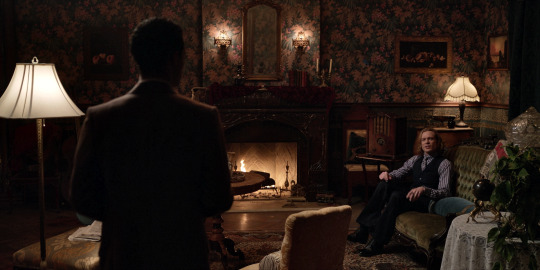

Three Peaches on a Stone Plinth
Adriaen Coorte, 1705
Coorte was a Dutch Golden Age painter of mostly small, intimate still lifes, and little is known of his life.
Still Life with Blue Vase and Mushrooms
Otto Scholderer, 1891
Scholderer was a German painter of portraits and still lifes, and was acquainted with another painter we've seen already, Manet.
Cumulus Clouds, East River
Robert Henri, 1901-1902
Henri was an American painter, first featured in episode one.
[All three identified by @diasdelfuego.]
After Lestat moves back into the house, new furniture, new decorations and new art appear all over, leaving little trace of the previous domestic violence (that is, except for the "reminders" that Claudia insists on keeping).

La Nausée
Jean-Paul Sartre, 1938 [Identified by @saintarmand, here.]
A recent release at the time of this scene, this novel by French philosopher Jean-Paul Sartre deals with an isolated and melancholy protagonist.

Baby Strange
T. Rex, 1972
The song playing during Louis and Daniel's first meeting is by an English band, an early example of the glam rock genre.
If you spot or put a name to any other references, share via DM or in the reblogs, and let us know if you'd like us to add them with credit to the post!
Starting tonight, we will be rewatching and discussing the finale, ...The Thing Lay Still. We hope to see you there! And, if you're just getting caught up, learn all about our group rewatch here ►
#louis de pointe du lac#the vampire claudia#claudia iwtv#the titular vampire#spark in the dark#vampterview#interview with the vampire#iwtv#amc interview with the vampire#interview with the vampire amc#amc iwtv#iwtv amc#IWTVfanevents#rewind the tape#like angels put in hell by god#analysis and meta#art of the episode
33 notes
·
View notes
Text
i love falling asleep to debussy
#opera tag#opera#pelléas et mélisande#pelléas and mélisande#debussy#claude debussy#10/10 no notes#Spotify
2 notes
·
View notes
Text
I only recently clocked the Pelléas and Mélisande ref in the “Come to Me" lyrics (I had to look it up because I was like ‘what the heck is Lestat singing here?’): “Ruin each other/ Like star-crossed lovers/ Your Pelléas, my Mélisande.” At first glance the ref fits with the star-crossed lovers line—but why this pair?
The fact that they’re French helps (versus, for example, Romeo and Juliet), and Pelléas et Mélisande, based on a play by Maeterlink, is also Debussy’s only opera and Lestat loves opera. But it’s the play that’s the real easter egg. From the Wikipedia page the heroine suffers memory issues, and “...the whole play…expresses a sense that human beings understand neither themselves nor each other nor the world. The problem is not simply human blindness, but the lack of a fixed and definable reality to be known. This is the Maeterlinck who paved the way for the plays of Samuel Beckett.“ The play’s subject matter, up to its prelude to Beckett--who pops up in the vampire Sam’s Waiting for Guido/Godot--resonates with the show’s central grappling with meaning (and meaning-making in the absence of predetermined meaning/telos).
Lestat seems to be casting himself as Pelléas and Louis as Mélisandre: “At the beginning of the play [Mélisandre] has just escaped from a failed marriage that has so traumatized her that she scarcely remembers either it or her past. She marries Golaud [Pelléas' brother, thus the star-crossed part] with no choice of her own, and remains essentially distant from him. The audience realize she is falling in love with Pelléas long before she does.” I don’t want to offer too much analysis here, but strong metaphorical parallels could be made - including how Pelléas and Mélisandre’s love offers them meaning in an otherwise meaningless existence (!)

19 notes
·
View notes
Text

Lex Reitsma, Pelléas et Mélisande, De Nederlandse Opera [then De Nationale Opera], Het Muziektheater Amsterdam, 2006 [NAGO – Nederlands Archief Grafisch Ontwerpers]
#graphic design#typography#art#music#opera#theatre#theater#poster#lex reitsma#claude debussy#de nederlandse opera#de nationale opera#het muziektheater amsterdam#2000s
8 notes
·
View notes
Text
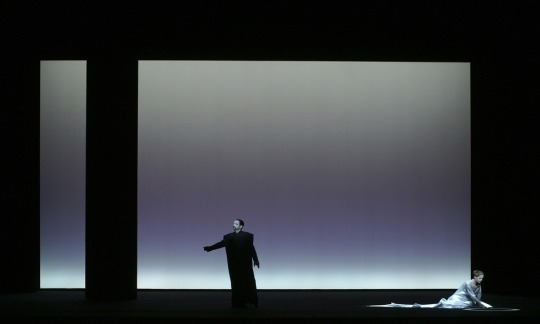

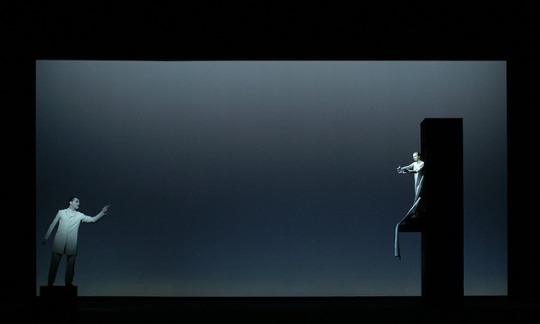
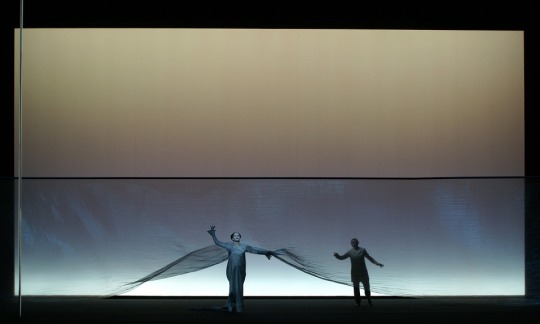
Before discovering Maeterlinck’s play, Debussy said of the opera he dreamt of composing: “Music begins when words are powerless to express; music is perfect for the inexpressible; I would like it to seem to come out of the shadows and, at times, to go back, always discreet.” Thanks to Maeterlinck’s characters, to his highly precise and very vague language, so cruel and so apt, Debussy was able to realise the drama of his dreams. A fateful enchantment holds sway over the castle of Allemonde. No sooner does Golaud find Mélisande in the forest and bring her to the kingdom of his ancestors than they find themselves unable to leave, chained to a place that nevertheless belongs nowhere. The castle is racked by desolation and decay. The park seems to be dying under the weight of invisible darkness. The sun barely manages to break through and cast light on the miraculous yet abandoned fountain which used to heal the eyes of the blind and whose waters appear to be bottomless. From the walls one can see the sea, and, at last, the clear sky. But there are also underground tunnels leading to the centre of the earth, suddenly reminding us that we are forever walking over chasms.
Debussy's Pelléas et Mélisande (Paris National Opera, 1997), dir. Robert Wilson
392 notes
·
View notes